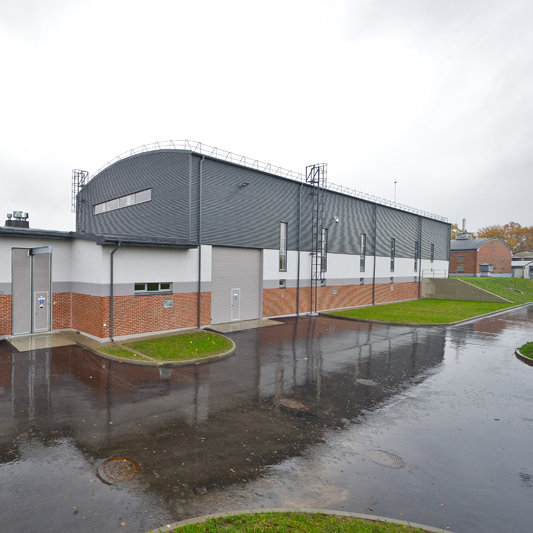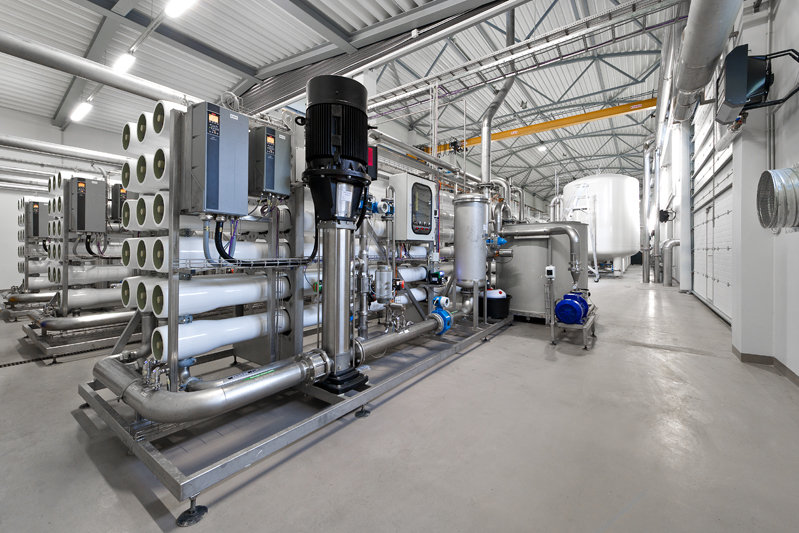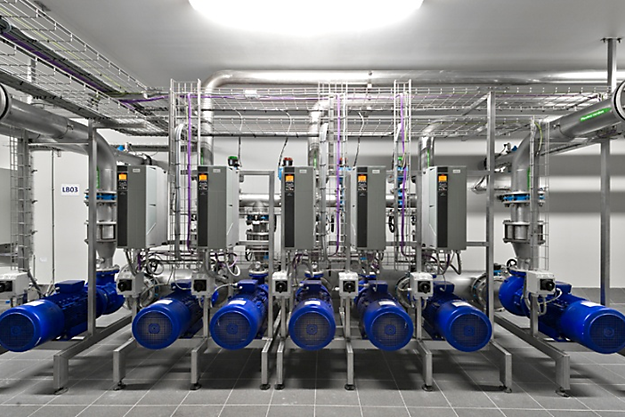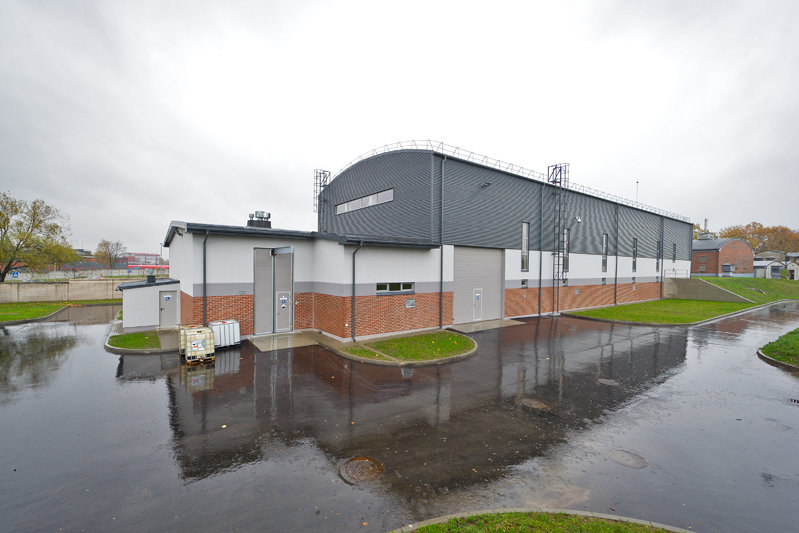Waterworks in Lithuania
Drinking water treatment plant for residual desulphurisation, nitrification (ammonium reduction), turbidity removal and fluoride reduction.
In a municipal waterworks, the open gravel filtration - downstream of a biological, fluidised-bed hydrogen sulphide removal stage - had to be renewed for the separation of excess biomass (turbidity). At the same time, hydrogen sulphide breakthroughs were to be intercepted, additional ammonium removed and excessive fluoride contents reduced. In addition, the filtration efficiency was to be significantly increased.
In order to realise these tasks, a completely new waterworks was built next to the old filter house. Chriwa was awarded the contract for project planning, delivery, installation, commissioning of the entire new treatment plant including the complete electrical and automation technology, as well as for the expansion and integration into the existing supra-regional SCADA of the water supplier.

NUMBERS & FACTS:
• System output: 150 ... 900 m³/h variable
• Scope of services: Project planning, manufacture, installation, ready-to-operate handover of the entire system incl. SCADA
• Time: Construction, installation, commissioning 2013
Process technology
To cope with this complex task, a "dry filtration" for further desulphurisation with simultaneous nitrification and partial reduction of other organic water constituents was planned as the first treatment stage.
This is followed by inline flocculation with iron salts and subsequent clear filtration in closed gravel filters for turbidity removal with partial fluoride reduction through "co-precipitation".
A partial flow of this water is additionally desalinated via a reverse osmosis (RO) stage and thus, among other things, completely freed from fluoride and then mixed again with the main flow. This keeps the fluoride concentration in the mixed water for distribution below the permitted limits.
Finally, excess carbon dioxide dissolved in the water is reduced in a trickle cascade to stabilise the water in a low-corrosion range of low calcite saturation before distribution.




